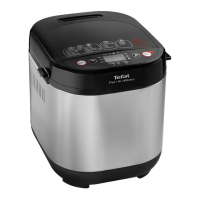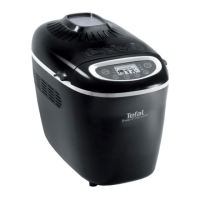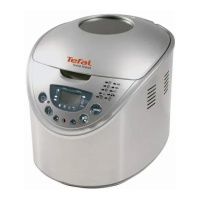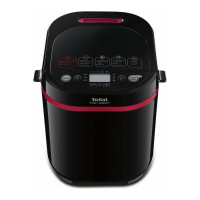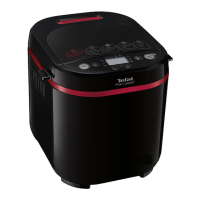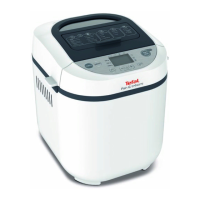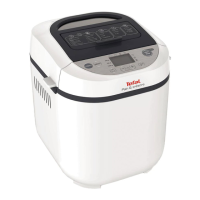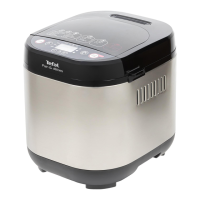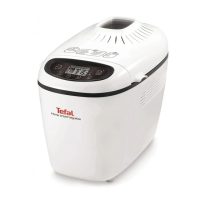101
Too liquid OK Too dry
Example: Adjust the quantity of liquid. according to the consistency of the dough. It should be
relatively supple, but not liquid.
Exception: Cake dough should remain rather liquid.
• The flour mixtures have to be sifted with the
yeast to avoid clumps.
• The kneading needs some encouragement: to
foster their incorporation, scrape down any
unmixed ingredients from the sides to the
middle of the bowl using a spatula (made of
wood or plastic to avoid scratching the
coating).
• You should also help with incorporation when
adding ingredients.
• The nature of the ingredients used for gluten-
free recipes does not allow the bread to
brown as it normally would. The top of the
bread often remains rather white.
• Gluten-free bread cannot rise like traditional
bread and often remains flat on top.
• Not all premix brands deliver the same
results: the recipes may need to be adjusted.
Therefore, we recommend that you
experiment (see example below).
Precautions for using gluten-free programs
- if the dough is too wet and sticks to the
sides, you may need to add a little flour.
Such corrections should be undertaken very
gradually (no more than 1 tablespoon at a
time) and wait to see if there is an
improvement before continuing.
• A common error is to think that adding
more yeast will make the bread rise more.
Too much yeast makes the structure of the
bread more fragile and it will rise a lot and
then fall while baking. You can determine the
state of the dough just before baking by
touching it lightly with your fingertips: the
dough should be slightly resistant and the
fingerprint should disappear little by little.
g
